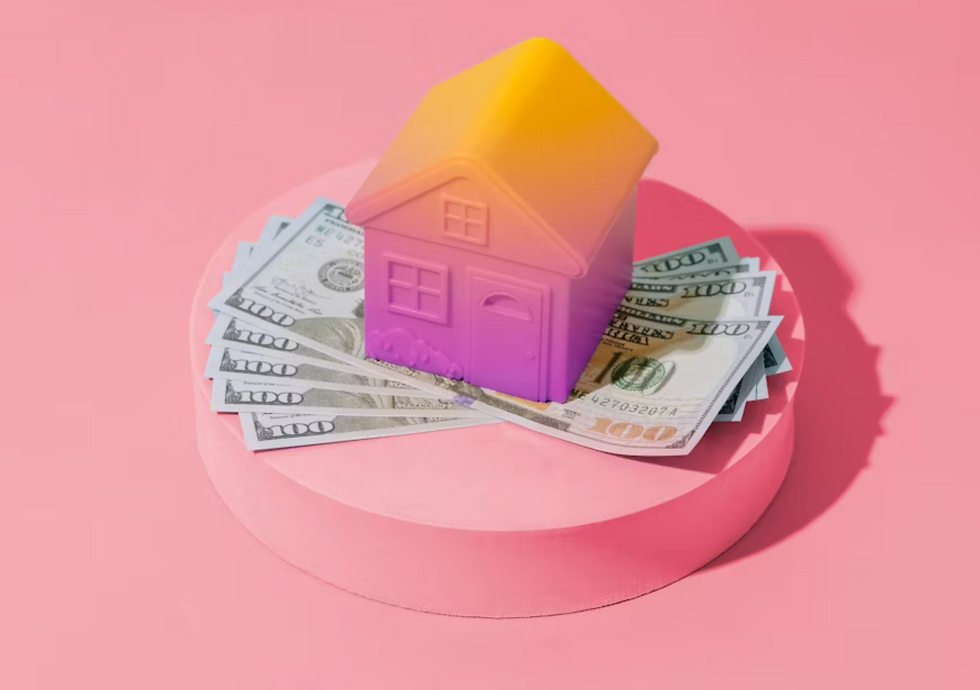BEYOND THE SQUARE FOOTAGE: HOW YOUR HOME'S 'HIDDEN ASSETS' CAN AFFECT ITS VALUE
- Staff Writer
- Aug 13
- 5 min read

When most people think about a property’s value, their mind jumps straight to square footage of the home.
Bigger rooms. More bedrooms. A spacious kitchen. While these factors matter, they don’t tell the whole story.
Some of the strongest influences on value sit quietly in the background—things you might not notice on the first walk-through but can have a real impact on how buyers, investors, and appraisers see your home.
These “hidden assets” aren’t necessarily obvious from the street or even the listing photos.
They’re the subtle features, smart upgrades, and environmental factors that can boost desirability and ultimately influence the price you can achieve. If you’re buying, selling, or just planning for the future, understanding them can give you a sharper, more strategic perspective on property value.
The Power of the Plot
Land is more than just the patch of earth your home sits on- it’s a living factor in value. Shape, slope, and orientation all play a role. A well-oriented plot can improve natural light inside the home, enhance energy efficiency, and even create opportunities for landscaping that adds curb appeal.
A rectangular, level plot might give you more usable outdoor space compared to an irregular or steep one of the same size. That’s something buyers notice, even if they can’t always articulate why they feel more comfortable in one yard over another.
In urban settings, the position of your property relative to busy roads or green spaces can have an even stronger impact.
Less traffic noise and better access to parks are often worth more than an extra few square meters inside.
Infrastructure You Can’t See (But Should Care About)
Not all value lies in what you can see and touch. Sometimes it’s in what’s behind the walls—or under the ground. Updated plumbing, modern wiring, fibre internet connections, and efficient insulation all carry weight in today’s market.
Buyers are increasingly wary of costly post-purchase surprises. If your home already has major infrastructure upgrades, that peace of mind can translate into a higher offer. Even if those upgrades aren’t visually striking, they remove future expenses from the buyer’s to-do list, which adds real value.
This is where working with a knowledgeable property advisor, like MGP Property, can pay off. They understand how to position these less-visible strengths in negotiations so buyers see them as part of the bigger value picture.
The Energy Factor
Energy efficiency isn’t just about saving money on utility bills - it’s also a growing priority for buyers who care about sustainability. Features like solar panels, high-quality windows, smart thermostats, and insulated roofing can be powerful value drivers.
While these upgrades have upfront costs, they can reduce a home’s running expenses, which appeals to budget-conscious buyers. In some markets, energy efficiency certifications can also give your home a competitive edge in listings.
Storage That Works Harder
You might not think about your home’s storage spaces as a big deal, but clever, functional storage is one of those features that quietly sells homes. Well-designed built-ins, walk-in pantries, and organised garage systems can make a property feel more spacious and livable—even if the overall square footage stays the same.
It’s not about quantity alone. A huge cupboard that’s hard to reach isn’t as valuable as a smaller, well-lit storage area that’s easy to use. Homes that make everyday life simpler often leave stronger impressions during showings.
The Lifestyle Layer
Every property exists within a wider context. Schools, public transport, local markets, and recreational facilities all influence value—but it’s more nuanced than “good schools equal high prices.”
Proximity to cultural spots, boutique cafes, or niche sports facilities can shape demand, especially in certain buyer segments. For example, a home within walking distance of an artisan bakery and weekend farmers’ market might appeal to a completely different demographic than one near a major sports stadium.
The important takeaway is that lifestyle fit matters. A home in an area that aligns with a buyer’s personal rhythm and priorities can be worth more to them than an otherwise similar home elsewhere.
Renovations With Return in Mind
Not every renovation pays back equally. A stylish kitchen update might grab attention, but a well-planned laundry or mudroom upgrade can have just as much impact, sometimes more, on overall livability.
When you’re planning improvements, think beyond aesthetic appeal. Focus on how the changes will make the home easier to live in, cheaper to maintain, or more adaptable to future needs. This approach tends to create lasting value rather than a temporary “wow” factor that fades once the novelty wears off.
Privacy and Sound Control
In a busy world, privacy is a premium feature. Homes that feel shielded from prying eyes or street noise can command higher prices. That could come from fencing, strategic landscaping, or architectural design that buffers living spaces from outside activity.
Sound control works both ways—reducing incoming noise and preventing your own household sounds from escaping. Quality windows, insulated walls, and thoughtful room placement all contribute. These upgrades might not make it onto glossy marketing flyers, but they’re deeply felt during a viewing.
Future-Proofing Potential
Buyers today aren’t just looking at how a home works now - they’re thinking about how it will work five, ten, or even twenty years from now. Adaptable spaces that can change purpose over time hold strong appeal.
This might mean a garage with enough height for a loft addition, a basement with potential for conversion, or an open-plan space that could easily be divided if needed. Even if you never make those changes, buyers often see potential as part of the property’s value equation.
How to Highlight Your Home’s Hidden Assets
If you’re selling, you can’t assume buyers will notice all these factors on their own. It’s your job, often with your agent’s help, to make sure they’re front and centre in the conversation.
Here are a few practical tips:
Document upgrades – Keep records of renovations, repairs, and installations, especially those related to energy efficiency or infrastructure.
Show, don’t just tell – Use staging to highlight storage, lighting, and adaptable spaces.
Connect features to benefits – Instead of simply listing “double-glazed windows,” explain how they reduce heating costs and improve comfort.
Leverage your agent’s expertise – Professionals know how to present these assets in ways that resonate with buyers and appraisers.

The Bottom Line
Your home’s value isn’t only about what you can measure with a tape or see on a floor plan. It’s shaped by an entire network of visible and invisible factors that together create desirability and demand.
By understanding and showcasing these hidden assets, you can position your property more effectively, whether you’re setting a price, preparing to list, or simply keeping tabs on your long-term investment.
The best part? Many of these features can be enhanced over time without major structural changes. With a strategic approach, you can steadily grow the elements that matter most to the people who will one day see your home not just as a building, but as the right place to build their own life.








